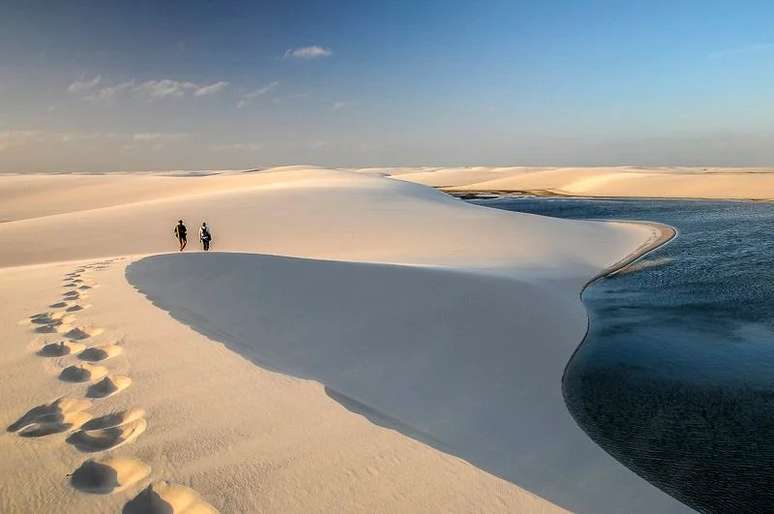Most of them are located in the Northeast region […]
Even if some names sound quite familiar, many natural parks are still (illustrious) unknown to Brazilians.
Recently, the Semeia Institute and the ICMBio (Chico Mendes Institute for the Conservation of Biodiversity) published a study on the five most remembered parks of this type in Brazil.
According to the survey, which interviewed 1,539 Brazilians from ten metropolitan regions of the country, although the majority of the population knows about one of Brazil’s 569 natural parks, about a third (29%) have not yet been to any of these places.
“This scenario expresses the challenge of increasing visits to Brazilian parks by public opinion, faced by the managers and specialists of these areas”, analyzes the Knowledge Coordinator of the Semeia Institute, Mariana Haddad, in a note sent to Travel by fare.
But after all, what is a natural park?
Natural parks
There are large areas demarcated by the government for environmental conservation.
They are generally located in places further away from urban centers and are sought after by visitors seeking adventurous activities, contact with nature and contemplation of natural attractions, such as the Jaceguava Municipal Natural Park, on the banks of the Guarapiranga reservoir, in Parelheiros, and the nearby PNM Varginha.
Urban parks
These public green areas are located within cities and are often sought after by the population for sporting, recreational, entertainment and contact with nature activities in urban centres.
Ibirapuera and Horto Florestal are some examples of this type of parks.
The 5 best known natural parks in Brazil
1st place
Chapada Diamantina National Park /Bahia
According to the research, Brazil’s best-known park was remembered by 53% of people and is located in a protected area of the Caatinga and Atlantic Forest Biosphere Reserve.
This 1985 park offers activities such as hiking, bathing in rivers, climbing and around 300 kilometers of hikes, such as the classic Trilha da Cachoeira da Fumaça, in one of the most famous waterfalls in Brazil, over 380 meters high.
2nd place
Chapada dos Veadeiros National Park / Goiás
This park in the north-east of Goiás has been a UNESCO World Heritage Site since 2001 and is home to hundreds of springs, streams, canyons and ancient rocks.
According to the survey, one in two respondents said they knew the park, famous for its waters with waterfalls, pools and rapids, which attract climbers and canyoning enthusiasts.
3rd place
Lençóis Maranhenses National Park / Maranhão
About 250 kilometers from São Luís, the destination is located in a transition zone between the Cerrado, Caatinga and Amazon biomes.
Recognized for its paradise lagoons and for hosting the largest white sand dunes in the country, the park was remembered by 48% of people interviewed in the survey, whose most visited tour is the Blue Lagoon Circuit, with 12 kilometers of trails on the remaining and about 2 kilometers directly between the dunes.
4th place
Cantareira State Park / Sao Paulo
Of all the people interviewed in the survey, 47% said they were familiar with this park.
It was created in 1968 and has been part of the UNESCO Green Belt Biosphere Reserve in the city of São Paulo since 1994, protecting an important portion of the state’s Atlantic Forest.
The place is recognized for protecting one of the largest areas of native tropical forest in the world located in a metropolitan region. Its four centers (Pedra Grande, Águas Claras, Engordador and Cabuçu) are open to visitors, with particular attention to Pedra Grande, with panoramic views of the capital of São Paulo.
5th place
Fernando de Noronha Marine National Park/Pernambuco
Remembered by 47% of people, this park in the Fernando de Noronha archipelago is the dream of many Brazilians, with its beaches, natural pools and ecological trails.
Created in 1988, it was declared a Natural Heritage of Humanity by the United Nations Educational, Scientific and Cultural Organization (UNESCO) in 2001.
Source: Terra
Ben Stock is a lifestyle journalist and author at Gossipify. He writes about topics such as health, wellness, travel, food and home decor. He provides practical advice and inspiration to improve well-being, keeps readers up to date with latest lifestyle news and trends, known for his engaging writing style, in-depth analysis and unique perspectives.








